An Astrologically Derived Date for Lughnasadh
Astrologer Maureen Richmond, Ph.D.
Lughnasadh: One of Eight Key Points in Time
Observed by Pagans around the world, Lughnasadh is a late summer festival commemorating the first harvest of the fruits of nature. Honoring the plentiful generosity of the Earth, the observance of Lughnasadh is thought by some scholars to go back as far as 1200 B.C.E, which is to say, more than 3000 years ago when the Celtic peoples of the British Isles and western Europe honored Lughnasadh during the Iron Age.
In the twenty-first century, Lughnasadh is a seasonal celebration observed by Pagans and Witches following a wide range of lineages and paths. Also called Lammas, Lughnasadh is traditionally celebrated in the northern hemisphere on August 1, one of the eight sacred points of the Pagan calendar. Often referred to under the poetic term, The Wheel of the Year, the Pagan calendar itself is a uniquely astrological concept worthy of thoughtful attention by any and all who recognize the astrological powers behind the human experience.
The Structure of the Pagan Calendar
The fundamental building blocks of the Pagan calendar are the equinoxes and solstices. These points in the cycle of the year are determined by astronomical constants far beyond the reach of human control. Products of the cosmic forces which decreed the arrangement of the solar system, the sizes and placements of the various planetary bodies, and the varying orbital speeds, the equinoxes and solstices are authentic expressions of cosmic principles working out in our solar system.
As viewed and experienced from the particular vantage point of planet Earth, the equinoxes and solstices occur at four distinct points in the year, dividing the year into four absolutely equal quarters.
The half-way points in between the equinoxes and solstices constitute the remaining four points of the eight-point structure of the Pagan calendar. These half-way points between the solstices and equinoxes are referred to as the cross-quarter days. The four cross-quarter days and the four equinoctial-solstitial points form the eight key moments in time embodied in the Pagan eight point calendar.
The Difference Between the Wheel of the Year and the Modern Calendar
A timekeeping mechanism built entirely on established and unchanging astronomical fact, the Pagan eight point calendar makes imminently greater sense than does the civil calendar presently used throughout the world, which is tied to absolutely no significant astronomical factors. The popes of early Christianity are to blame for that. Eager to eradicate every sign of Pagan antiquity, the popes of early Christianity made it a first order of business to obliterate the observation of natural cycles, such as those of the Sun and the Moon.
The Pagan calendar was based on the Earth to Sun relationship as seen in the equinoctial-solstitial frame of reference. In in the papal view, the calendar structured on the equinoxes and solstices was purely Pagan in nature and therefore worthy only of repudiation. Papal authority selected arbitrary points in the annual cycle and established the months and numbering of the days therein on that basis. As a result, January 1, for example, contains absolutely no magical significance. However, the Capricorn solstice 10 days before certainly does. The Catholic Church via papal authority hid the innately powerful Capricorn solstice deep in the last month of the year and attempted to further obscure it by naming another point in the year about 10 days later as the allegedly auspicious first day of the year.
In time, the people would forget that the Capricorn Solstice constituted one of the most powerful magical portals of the annual cycle, the popes reasoned. Only, as fate would have it, the memory of that great astronomical truth was far more stubborn and persistent than the popes had imagined. Pagans secretly held on to their natural knowledge of the equinoxes, solstices, and half-way points in between, and the result is visible today. All over the world, Pagan practitioners know that eight points of magical power are distributed throughout the year, portals in time for all to experience, absolutely free of charge.
Lughnasadh is a case in point. Traditionally celebrated in the northern hemisphere on August 1, Lughnasadh is normally defined as the half-way point between the Cancer Solstice and the Libra Equinox. In Pagan tradition, the Cancer Solstice is termed Litha, while the Libra Equinox is termed Mabon. So Lughnasadh is often defined as the half-way point between Litha and Mabon.
However, due to the distortions inherent in the current civil calendar system (another lovely legacy of the early popes), August 1 does not in fact fall at exactly half-way in between Litha and Mabon. However, a more exact way to figure the half-way point between Litha and Mabon exists. This calculation can be done easily and straightforwardly by simply measuring the progress of the Sun along the ecliptic, which is to say, within the zodiac of signs, and finding the midpoint between the Cancer Solstice and the Libra Equinox. This method identifies the precise zodiacal position of the cross-quarter day known as Lughnasadh, or Lammas.
How to Derive the Correct Date for the Lughnasadh Cross-Quarter Day
The zodiac of signs is composed of 360 degrees, with each sign comprising 30 degrees of space.
Using this system, it is possible to readily determine when the Sun has reached a zodiacal position precisely half-way between Litha (the Cancer Solstice), and Mabon (the Libra Equinox).
Astrologically considered, the Cancer Solstice (or Litha) occurs when the Sun is positioned at 0 degrees of Cancer, while the Libra Equinox occurs when the Sun is positioned at 0 degrees of Libra. In between intervene exactly 90 degrees of zodiacal longitude. Half of this distance would be 45 degrees of zodiacal longitude. Since each sign equals 30 degrees of zodiacal longitude, 45 degrees of zodiacal longitude equals 1 ½ signs. Adding that increment to 0 degrees Cancer, it is evident that the half-way point between 0 Cancer and 0 Libra is 15 degrees of Leo. This same result can be achieved by subtracting 45 degrees of zodiacal longitude from 0 degrees Libra. Doing so reveals that indeed it is 15 degrees of Leo which lies precisely half-way between the Cancer Solstice and Libra Equinox, which is to say, half-way between Litha and Mabon.
The position of the Sun at 15 degrees of Leo, however, does not fall in any year on August 1. In fact, it always falls a few days later. In August of 2024, for example, the Sun arrives at 15 degrees of Leo on August 6. For the astrologically inclined, August 6 should therefore be regarded as the true date on which Lughnasadh occurs in 2024. From this perspective, it is the date of August 6 and not August 1 on which the powers of an authentic cross-quarter moment may be experienced.
The Benefits of Celebrating Lughnasadh on August 6, 2024
Interestingly, in 2024, true Lughnasadh on August 6 falls just two days after New Moon, which occurs on August 4 at 6:13 am CDT. As a result, true Lughnasadh 2024 falls within the first few days of a lunar cycle. The first few days of any lunar cycle constitute a particularly auspicious time of the month in its own right, just right for magical operations designed to embody and advance important intentions. If ritually celebrated on August 6, Lughnasadh 2024 therefore packs a potent punch, combining the cross-quarter astronomical power of 15 degrees Leo and the natural thrust of the New Moon energy to deliver a real window of opportunity in time.
Indeed, the August 6 date for Lughnasadh and the New Moon energies early in the lunar cycle working together promise to provide highly opportune energies for the creation of powerful rituals designed to celebrate Pagan tradition and make contact with the Pagan deities of antiquity.
Here is an argument in favor of celebrating Lughnasadh 2024 on or near August 6 instead of August 1, for August 1 falls within the final days of waning or Old Moon. Old Moon is all about dissolution, letting go, and elimination. That’s the background vibe on August 1, 2024, as the lunar cycle spirals downward and energies dwindle both physically and psychologically. At that time, the lunar cycle will be dying back and winding down for rebirth on August 4. Everything decelerates and weakens in intensity during very Old Moon, the absolute dregs of the lunar cycle. For those seeking to receive active signs from their traditions and deities, Lughnasadh celebrations situated on August 6 during the lively first few days after the August New Moon are likely to garner better results.
Further, associating Lughnasadh with 15 degrees of Leo rather than with August 1 carries another benefit: it’s an act of rebellion against the imposition of a papist calendrical system. It also harkens into deep Pagan antiquity when a structure based on the 15 degree position in the fixed signs was estimated as the stable structure conveying a sense of cosmic order as expressed through the zodiac, which is to say, the plane of the solar system as seen through our ecliptic.
The Eternal Value of the Pagan Eight-Point Wheel of the Year
Thinking in this way, it is evident that the eight point Pagan calendar of the year is founded on unchanging measures of movement through space identified using the properties of sacred geometry. This approach starts with the undisputed reality of the equinoxes and solstices as the fundamental square of the heavens. From there, it incorporates the 15th degree of the fixed signs as the half-way points, or cross-quarter points. In other words, this structure is not based upon the dates of what is currently defined as either a year or a month by the surrounding society. Instead, the Pagan eight point calendar is based on celestial factors. This structure in time embodies stability and permanence, for it unfolds in a stately, regular rhythm marking out an entirely reliable pulse of life.
To conceptualize the annual cycle or Wheel of the Year in this way is to restore the power rightfully to be credited to the Pagan calendar, which was from the beginning built on the very astronomical fundamentals which drive and sustain life on this planet. The acknowledgement of 15 degrees Leo or August 6 as the true date for Lughnasadh 2024 is a step in that direction.
[Note: in the southern hemisphere, the seasons are the reverse of those in the northern hemisphere. Thus, the harvest-themed Lughnasadh in the southern hemisphere is celebrated in early February, while early August in the southern hemisphere sees the celebration of the late winter festival of Imbolc.]


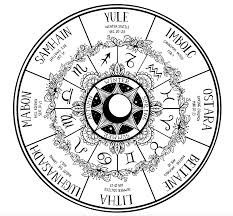
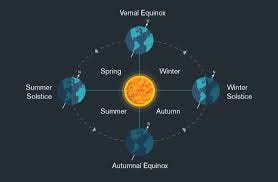
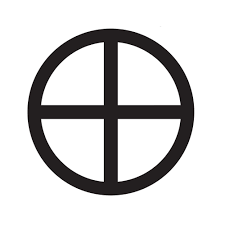
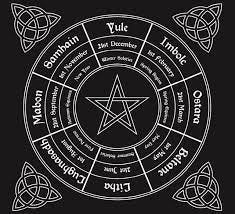
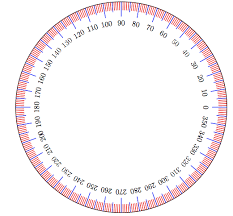
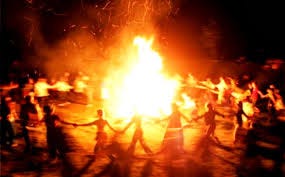
WOW!! More, please!